Centipede Infestation Guide – Prevention & Control
Centipedes are fascinating creatures found worldwide, known for their elongated bodies and numerous legs. While their name suggests they have a hundred legs, most species actually have between 30 and 354 pairs of legs. They are predominantly nocturnal and play a crucial role in controlling insect populations in their ecosystems. Centipedes are equipped with venomous fangs, which they use to capture and immobilize their prey. Although generally harmless to humans, some centipede species can deliver a painful, venomous bite. These arthropods prefer dark, damp environments and can be found in gardens, basements, and under rocks or logs. Understanding these creatures is vital for effective pest control and coexistence with these unique and helpful arthropods.
The different species of centipede
Centipedes are a diverse group of arthropods with over 8,000 known species. Some of the most common species include:

House Centipede (Scutigera coleoptrata)
Often found indoors, especially in damp areas, these centipedes are known for their speed and ability to capture small pests.
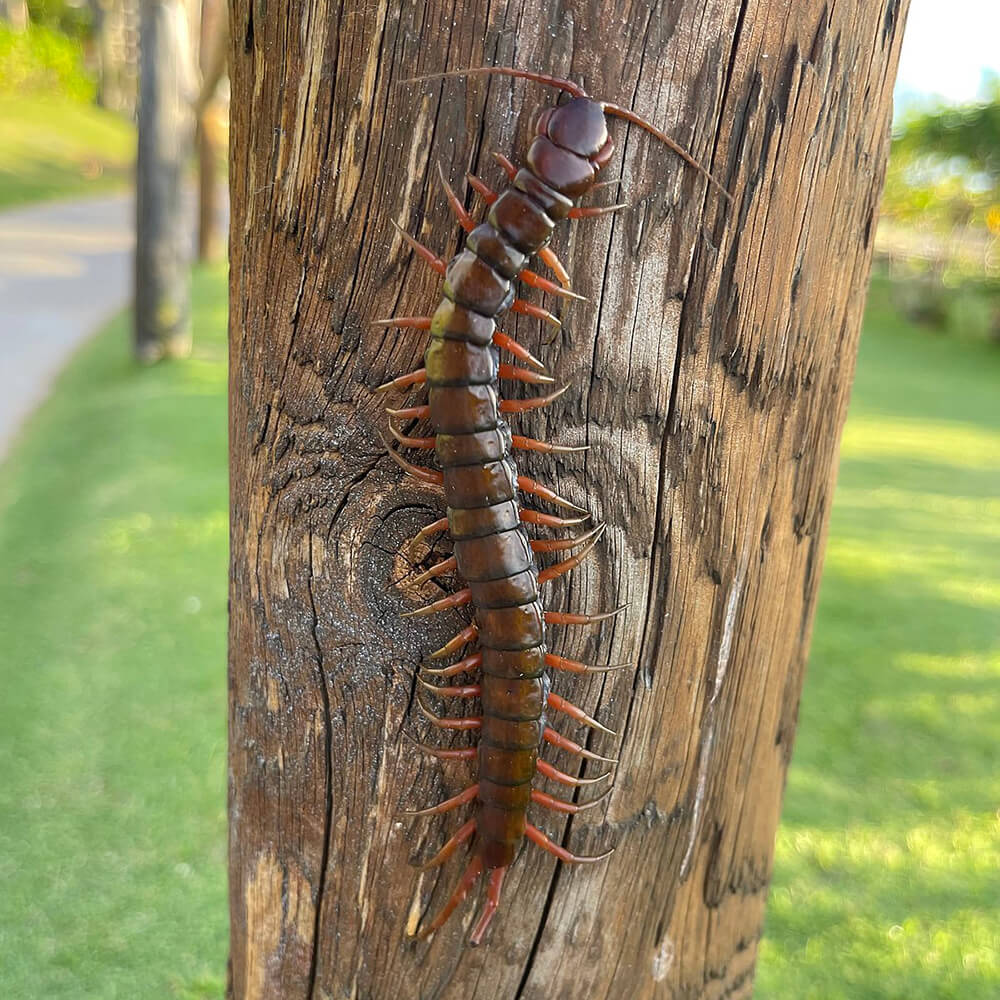
Tropical Centipede (Scolopendra subspinipes)
Found in various tropical regions around the world, these centipedes can grow quite large and are known for their potent venom.
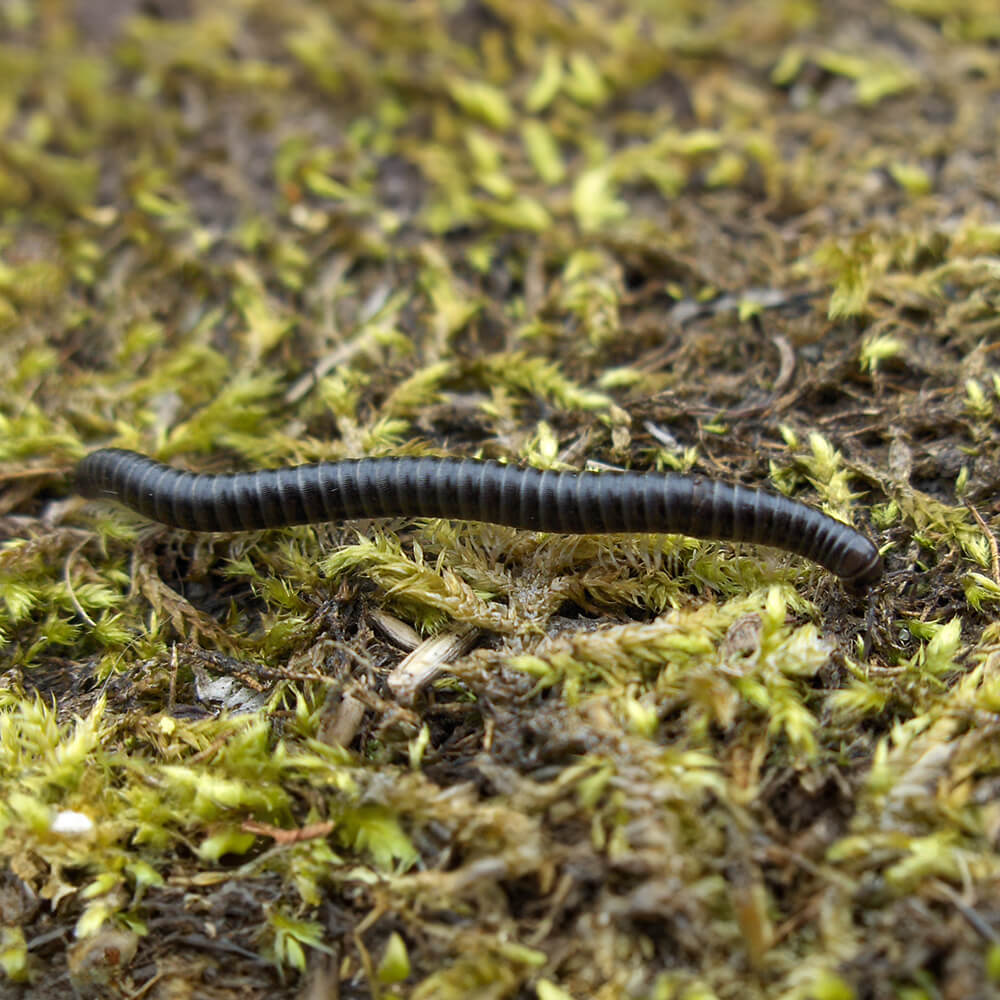
Soil Centipede (Julida)
Often encountered in leaf litter and soil, these centipedes are important decomposers in terrestrial ecosystems.
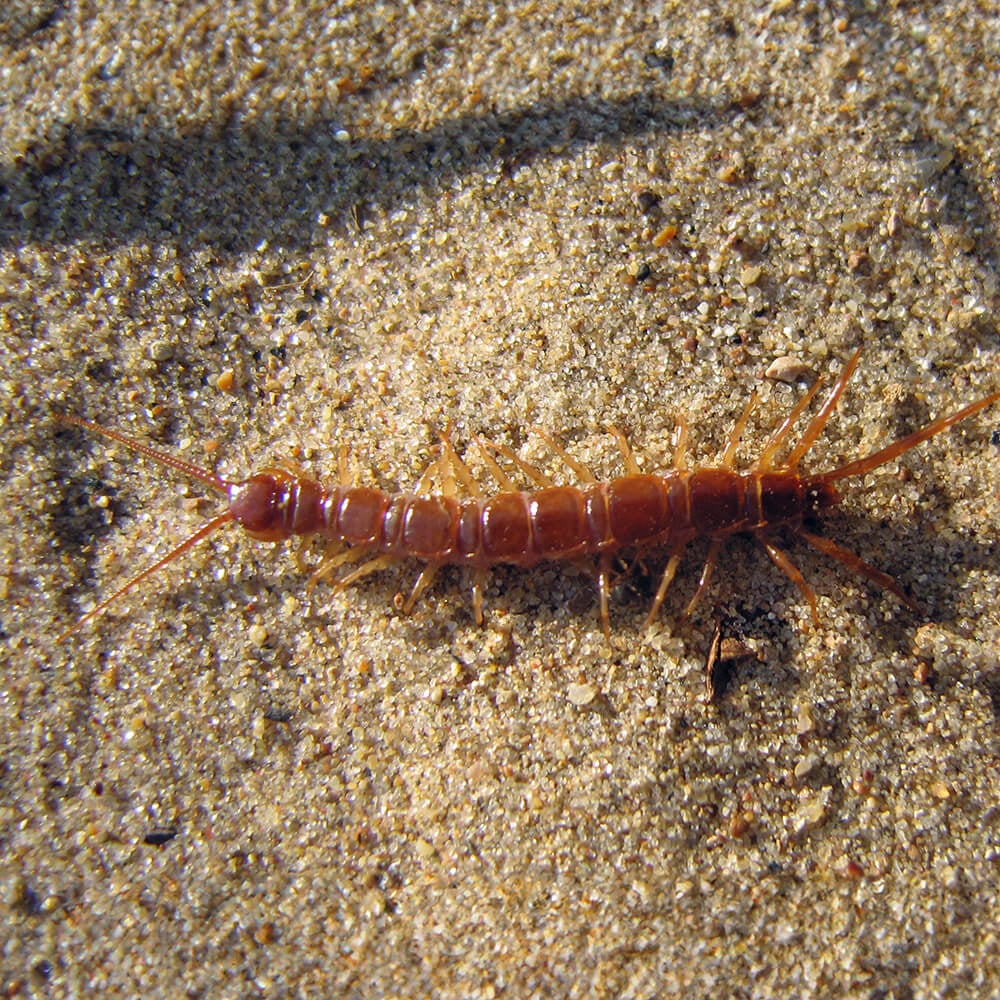
Stone Centipede (Lithobiomorpha)
These are typically found in outdoor environments, such as gardens and under rocks.

Desert Centipede (Scolopendra polymorpha)
Native to the arid regions of the southwestern United States, these centipedes are well-adapted to desert environments.
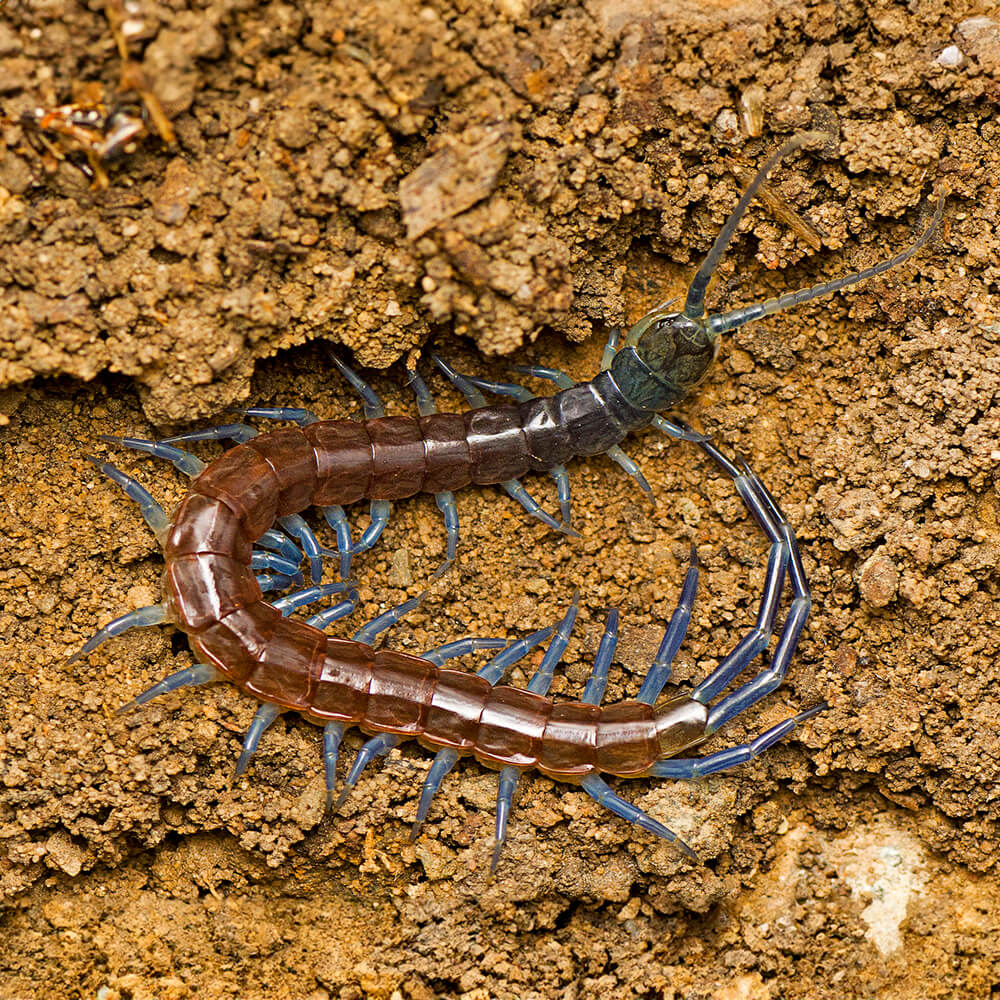
Tiger Centipede (Rhysida)
Known for their distinctive coloration and often found in tropical regions, these centipedes are both fascinating and a bit intimidating in appearance.
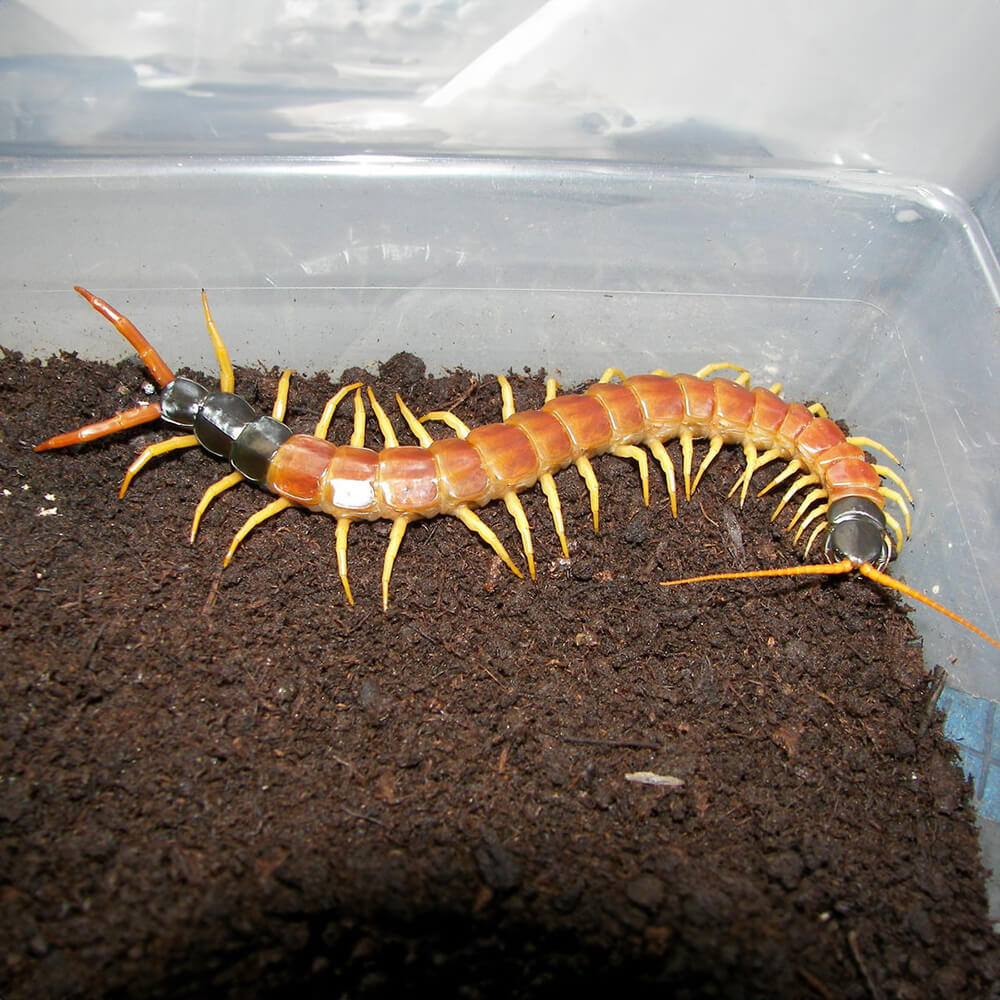
Giant Redheaded Centipede (Scolopendra heros)
Native to the southwestern United States and northern Mexico, these large centipedes are known for their striking coloration.
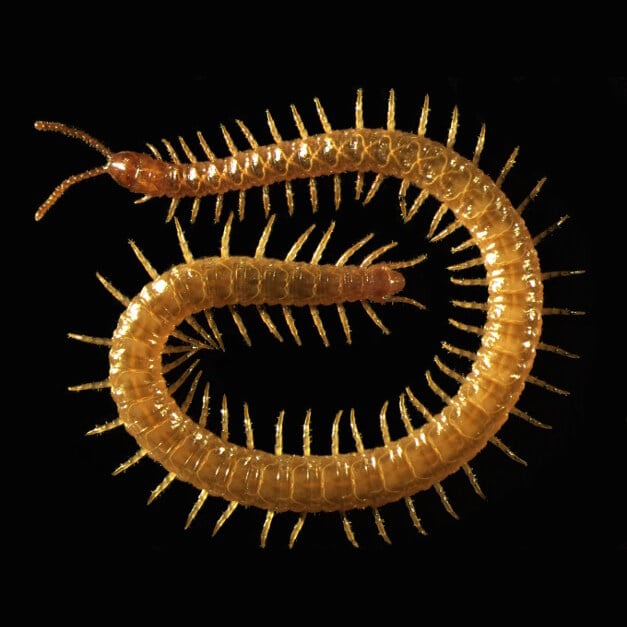
Common Brown Centipede (Geophilomorpha)
These centipedes are found in various habitats and are characterized by their many leg pairs, ranging from 27 to over 200.
These are just a few examples of the many centipede species found around the world, each adapted to their specific environments and exhibiting unique characteristics.
There are over 8,000 known species of centipedes worldwide, each with unique characteristics and behaviors.
The life cycle of centipede
Centipedes, those fascinating multi-legged arthropods, undergo a remarkable life cycle that often goes unnoticed in the shadows. Unveiling their intriguing journey from egg to adulthood can provide insights into these intriguing creatures.

Egg Stage
The centipede life cycle commences with the laying of eggs, a phase that remains shrouded from the world. Typically, adult female centipedes deposit their eggs in concealed, sheltered areas. These sites could be underground in soil, beneath leaf litter, or within other protective environments. The eggs are secure and remain unseen, as the centipede prepares for the next generation.

Molting Stage
Centipede nymphs are not born with all their leg pairs but gain more with each molt. As they grow, they shed their exoskeleton, a process known as molting. With each molt, centipedes add leg pairs and gradually assume their adult appearance. This stage can span several months to several years, contingent on the centipede species and environmental factors like temperature and food availability.

Nymph Stage
The hatching of centipede eggs marks the advent of the nymph stage. These young centipedes, known as nymphs, emerge as tiny versions of their adult counterparts. However, they have fewer leg pairs at this point, usually fewer than the adult count. Nymphs are equally adept predators, eagerly hunting for smaller insects and arthropods in their vicinity.

Adult Stage
Upon reaching maturity, centipedes bear the full complement of leg pairs characteristic of their species. At this stage, they play a vital role in ecosystems as efficient predators, helping to control insect populations. Depending on their species and habitat, centipedes can live for several more years, contributing to the intricate balance of nature.
Understanding the life cycle of centipedes unveils the marvel of nature’s diversity and intricacy. These remarkable creatures not only intrigue with their many legs but also with their journey from eggs to adulthood, demonstrating the beauty of adaptation and survival in the animal kingdom.
Centipedes molt as they grow, shedding their exoskeletons. The frequency of molts varies by species and environmental conditions.
The seasons most conducive to centipede
Centipedes, the unsung heroes of the arthropod world, have their own unique seasonal preferences that influence their activity and behavior. Unveiling the times when they thrive can provide insights into these enigmatic creatures.

Spring
As temperatures rise and the world awakens from winter slumber, centipedes begin to stir. Spring signals a resurgence of centipede activity. The warming weather and increased moisture levels offer ideal conditions for these arthropods to become more active. They emerge from their overwintering hideouts, seeking prey and potential mates.

Fall
With the arrival of autumn and the drop in temperatures, centipedes start preparing for the colder months ahead. They may retreat to sheltered areas or burrow underground, reducing their surface activity. Their behavior during this season is more subdued as they conserve energy and avoid extreme weather conditions.
Summer
Summer is the season when centipedes are at their most active. The warm and humid conditions create the perfect environment for these creatures to thrive. They are often spotted crawling in gardens, under rocks, and in the leaf litter. As nocturnal predators, they venture out during the night to hunt down insects and other prey.
Winter
Winter is the season when centipedes typically hibernate or enter a state of dormancy. They seek out concealed, insulated spots where they can remain dormant until the weather becomes more favorable. In some cases, they may even enter buildings seeking warmth and shelter, which can lead to occasional winter sightings indoors.
Understanding the seasonal preferences of centipedes sheds light on their ecology and behavior. While they might appear mysterious and elusive, centipedes are, in fact, intricately linked to the changing seasons, adapting to nature’s rhythms in their quest for survival.
Despite their name, centipedes can have a varying number of leg pairs, ranging from 15 pairs in some species to over 100 pairs in others.
Where do centipede come from, their habitat
Centipedes, those curious multi-legged arthropods, are not just creatures of happenstance. They have specific habitats and preferences that have evolved to suit their unique needs.

Natural Habitats: A Diversity of Dwellings
Centipedes are widespread, inhabiting a wide array of ecosystems across the globe. These habitats encompass diverse landscapes, from forests and grasslands to deserts and tropical rainforests. Each centipede species has its niche, with some preferring the leaf litter on the forest floor, while others thrive in burrows or under rocks.

Moist Microclimates: Dark and Damp
Centipedes have a predilection for moisture. They seek out habitats that provide the right humidity levels for their survival. Dark and damp environments, such as the leaf litter, provide ideal conditions. Centipedes are often found under rocks, logs, and fallen leaves, where moisture is retained, and prey is abundant.

Underground Dwellers: Soil and Burrows
A significant number of centipede species find solace in the earth beneath our feet. They burrow into the soil or seek shelter in decaying organic matter. These subterranean habitats offer protection from predators, stability, and a source of food. Soil centipedes, for example, are often found within the soil, aiding in decomposition and nutrient cycling.

Human Proximity: Centipedes at Home
Centipedes are not exclusive to wild habitats. They have adapted to human-altered environments and are often found in homes, basements, and crawl spaces. Dark, undisturbed corners and moisture-prone areas attract them. While they can be beneficial in controlling pests, their presence indoors may sometimes necessitate pest control measures.
Understanding the preferred habitats of centipedes is key to coexistence and effective pest management. By appreciating their adaptability to various ecosystems, we can better comprehend these fascinating arthropods and their vital role in the balance of nature.
Centipedes are primarily nocturnal, and they hunt their prey at night. During the day, they seek refuge in dark, concealed spots.
What attracts centipede into our homes
Centipedes, with their many legs and unique appearance, sometimes find their way into our homes due to specific attractants. Understanding what lures them indoors is the first step to preventing their unwelcome presence.
Moisture Magnet
Centipedes are drawn to damp environments, making areas with excess moisture prime attractants. Leaky pipes, damp basements, and crawl spaces create a welcoming atmosphere for centipedes seeking humidity.
Seasonal Migration
Centipedes can sometimes venture indoors during certain seasons. In colder months, they may seek warmth and shelter inside our homes. Conversely, during spring, they become more active and might inadvertently find their way indoors.
Dark and Undisturbed Corners
Centipedes are naturally nocturnal creatures and are more active in the dark. Dark, undisturbed areas in homes, like closets, attics, and basements, provide a refuge and ideal hiding spots.
Cracks and Crevices
Centipedes are adept at squeezing through tiny openings. If your home has gaps around windows, doors, or foundation walls, these creatures can exploit these entry points.
Food Sources
Centipedes are predators, and where there are small insects and arthropods, centipedes will follow. If your home has an abundance of tiny prey, such as ants, silverfish, or spiders, centipedes may be attracted to this readily available food source.
Basement and Crawl Spaces
The often neglected areas like basements and crawl spaces offer a perfect combination of darkness and humidity, making them enticing for centipedes.
Understanding what attracts centipedes to our homes empowers us to implement prevention measures. Properly maintaining your home, addressing moisture issues, and sealing entry points can help keep these multi-legged visitors at bay.
Centipedes may venture indoors seeking shelter, especially during colder months. They can be found in basements, bathrooms, and closets.
Signs that you have a centipede infestation
Centipedes, with their many legs and secretive nature, can sometimes establish a presence in our homes. Recognizing the signs of a centipede infestation is crucial for timely pest control and prevention. Here are some telltale indications that you may have a centipede problem:
Sightings
The most obvious sign is the sight of centipedes themselves. If you consistently spot these multi-legged arthropods in your home, especially in dark, damp areas like basements or bathrooms, it’s likely you have an infestation.
Silken Nests
Some centipede species construct silken nests to protect their eggs. These nests are usually concealed in dark, sheltered areas like crawl spaces or behind baseboards.
Entry Points
Inspect your home for possible entry points. Gaps around doors, windows, or foundation walls may provide an avenue for centipedes to enter.
Molted Exoskeletons
Centipedes molt as they grow, shedding their exoskeletons. Finding these discarded skins in hidden corners or near their hiding spots can be a sign of an infestation.
Moisture and Humidity
Centipedes are drawn to moisture. If you have persistent humidity or moisture issues in your home, it can make it more attractive to centipedes.
Prey Presence
Since centipedes are predators, if you have a significant number of small insects like ants, spiders, or silverfish in your home, it might be an indicator that centipedes are feeding on them.
Seasonal Activity
Centipedes are often more active during certain seasons, such as spring and summer. If you notice an increase in centipede sightings during these times, it could be an indication of an infestation.
If you suspect a centipede infestation, it’s important to take action promptly. Addressing moisture issues, sealing entry points, and considering professional pest control services can help eliminate the infestation and prevent further centipede problems.
Some centipede species construct silken nests to protect their eggs and young. These nests are often found in dark, sheltered areas.
Rooms where centipede hide
Centipedes, with their elusive nature and preference for dark, undisturbed environments, often find hiding spots in various rooms of your home. Understanding these hiding places can help you detect and address centipede infestations effectively. Here’s where centipedes frequently seek refuge indoors:

Basements
Centipedes are known to take shelter in the damp, cool environment of basements. Dark corners and moisture-prone areas provide them with ideal hiding spots.
Closets
Dark and seldom-disturbed closets can be attractive hiding places. Centipedes may reside among your clothing or other stored items.
Dark, Damp Corners
Any room in your home with dark, undisturbed corners can become a hiding place for centipedes. These include storage rooms, utility areas, and even wall voids.
Crawl Spaces
These often-neglected areas beneath your home can become centipede havens. The combination of darkness and humidity appeals to these arthropods.
Attics
These spaces may be home to centipedes seeking refuge from the elements. Insulation materials and undisturbed corners are potential hiding spots.
Moisture-Prone Areas
Centipedes are drawn to moisture. Kitchens, with their sinks and plumbing, may also provide suitable hiding spots.
Bathrooms
Centipedes are frequently found in bathrooms, particularly around drains and beneath sinks. The moisture-rich atmosphere and hidden crevices offer a perfect retreat.
Under Furniture
Centipedes can hide under furniture, including couches, beds, and chairs, taking advantage of the darkness and shelter.
Recognizing where centipedes hide is essential for effective pest control. Regular cleaning, sealing entry points, and addressing moisture issues in these areas can help reduce centipede populations and prevent infestations.
Some centipede species possess venomous fangs that they use to immobilize their prey. While their bite can be painful to humans, it is rarely dangerous.
The dangers and damages that centipede can cause
Centipedes, with their many legs and alien appearance, can sometimes trigger unease, but they pose minimal risks to humans. Nonetheless, they can create some specific concerns. Here’s a closer look at the potential dangers and damages associated with centipedes:
Painful Bites
While rare, some centipede species have venomous fangs and can deliver a painful bite if provoked or handled. The pain is typically localized and resembles a bee sting, causing discomfort but not severe harm.
Impact on Prey
Centipedes are carnivorous predators, and they play a role in controlling insect populations. This can be seen as both beneficial and harmful, depending on your perspective. They may reduce the number of nuisance insects but can also prey on beneficial insects.
Psychological Impact
Their unusual appearance and sudden appearances can cause psychological discomfort for some individuals. The presence of centipedes in homes may lead to anxiety and stress.
Allergies
Centipedes can trigger allergies in sensitive individuals. Their shed bristle-like hairs may become airborne and irritate the skin or respiratory system.
Property Damage
Centipedes don’t cause structural damage to buildings, but their presence can be a nuisance. Finding centipedes in your home, especially in bedrooms or bathrooms, can lead to discomfort and distress.
Overall, the dangers and damages caused by centipedes are relatively minor, and their benefits as pest controllers often outweigh any potential drawbacks. However, for those who find their presence unsettling or experience allergic reactions, addressing centipede infestations and implementing preventive measures may be necessary.
Centipedes can trigger allergies in sensitive individuals due to their shed bristle-like hairs. These hairs can become airborne and irritate the skin or respiratory system.
How to get rid of centipede / Available treatments
When centipedes overstay their welcome in your home, it’s essential to take action to eliminate them. Here are some available treatments and measures to get rid of centipedes:
Moisture Control
Centipedes are attracted to moisture. Reduce excess humidity by fixing any leaks, improving ventilation, and using dehumidifiers in damp areas like basements and bathrooms.
Insect Control
Since centipedes feed on other insects, controlling their prey can indirectly reduce centipede populations. Implement effective pest control measures for other insects in your home.
Preventive Measures
To avoid future centipede infestations, maintain a clean, well-ventilated home, regularly inspect potential entry points, and address moisture issues.
Seal Entry Points
Identify and seal potential entry points where centipedes may be infiltrating your home. This includes gaps around doors, windows, foundation walls, and utility penetrations.
Natural Remedies
Some natural remedies like diatomaceous earth or boric acid can be used as non-toxic alternatives. These substances, when applied in problem areas, can help eliminate centipedes by dehydrating them.
Remove Hiding Spots
Reduce their hiding places by decluttering and organizing dark, undisturbed areas. Regularly clean basements, closets, and storage rooms to disturb their potential habitats.
Professional Pest Control
If a centipede infestation is severe or persistent, consider enlisting the services of a professional pest control company. They can assess the situation, implement appropriate treatments, and provide long-term solutions.
Getting rid of centipedes requires a combination of prevention and treatment. By taking these measures, you can effectively control centipede populations in your home and create a more comfortable living environment.
Centipedes are predators and feed on insects, spiders, and other arthropods. They play a crucial role in controlling pest populations.
How to prevent centipede infestations
Preventing centipede infestations involves taking proactive steps to make your home less hospitable to these arthropods. Here are some effective measures to keep centipedes out of your living spaces:
Moisture Management
Centipedes are attracted to damp environments. Address moisture issues by fixing leaks, improving ventilation, and using dehumidifiers in areas like basements and bathrooms.
Effective Pest Control
Since centipedes prey on other insects, control other insect populations in your home. Implement pest control measures for pests like ants, spiders, and silverfish to reduce centipede food sources.
Preventive Maintenance
Maintain a clean, well-ventilated home to discourage centipedes. Regularly inspect and maintain your home’s exterior to deter these arthropods from seeking shelter.
Seal Entry Points
Inspect your home for gaps and cracks around doors, windows, foundation walls, and utility penetrations. Seal these entry points to prevent centipedes from infiltrating.
Natural Remedies
Consider using natural remedies like diatomaceous earth or boric acid in areas where centipedes are a concern. These substances, when applied correctly, can help deter centipedes and other pests.
Declutter and Clean
Regularly clean and organize dark, undisturbed areas like basements, closets, and storage rooms. By reducing hiding spots, you make your home less appealing to centipedes.
Regular Inspections
Conduct regular inspections of your home to identify potential problem areas and address issues promptly.
By taking these preventive measures, you can significantly reduce the risk of centipede infestations and create a less inviting environment for these multi-legged creatures. A clean, well-maintained home with controlled moisture levels is your first line of defense against centipede intruders.
Conclusion
In conclusion, centipedes, with their fascinating characteristics and occasional intrusion into our homes, serve as a reminder of the intricacies of the natural world. While centipede infestations may raise concerns, their impact on humans is generally minimal. By understanding their behavior, habitats, and employing preventive measures, we can peacefully coexist with these multi-legged arthropods. Embracing a balanced perspective and taking proactive steps to manage centipede populations ensures a harmonious living environment for both these unique creatures and the humans they occasionally share their space with.
